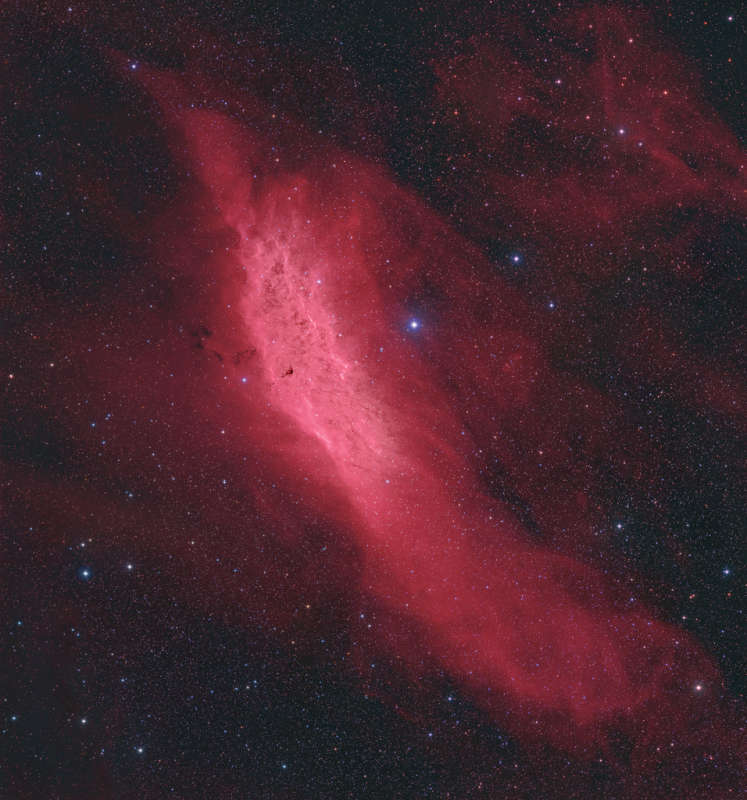
|
Credit & Copyright: Sara Wager
Explanation:
Drifting through the Orion Arm of the spiral Milky Way Galaxy,
this
cosmic cloud
by chance echoes the outline of California on the west coast of the
United States.
Our own Sun also lies within the Milky Way's
Orion
Arm, only about 1,500 light-years from the
California
Nebula.
Also known as NGC 1499,
the classic emission nebula is around 100
light-years long.
The California Nebula shines with the telltale reddish glow
characteristic of
hydrogen atoms recombining with long lost
electrons.
The electrons have been stripped away,
ionized by energetic starlight.
Most likely providing the
energetic
starlight that ionizes
much of the nebular gas is the bright, hot, bluish star
Xi Persei
just to the right of the nebula.
A popular target for astrophotographers, this deep
California Nebula image
is a 6 panel telecopic mosaic and covers a
wide field of view.
The nebula lies toward the constellation
Perseus,
not far from the Pleiades.
|
January February March April May June July August September October November December |
| ||||||||||||||||||||||||||||||||||||||||||||||||
NASA Web Site Statements, Warnings, and Disclaimers
NASA Official: Jay Norris. Specific rights apply.
A service of: LHEA at NASA / GSFC
& Michigan Tech. U.
Based on Astronomy Picture
Of the Day
Publications with keywords: California Nebula
Publications with words: California Nebula
See also:
